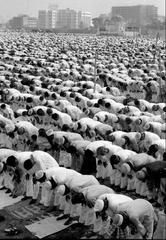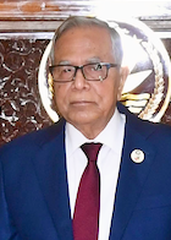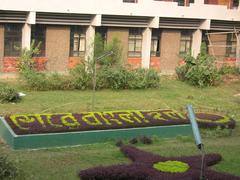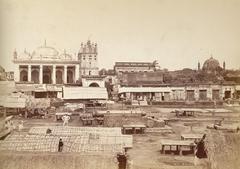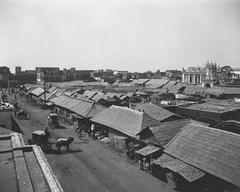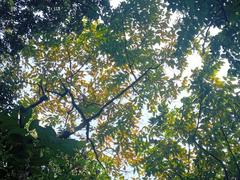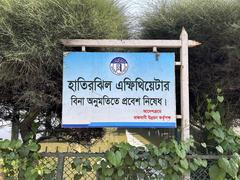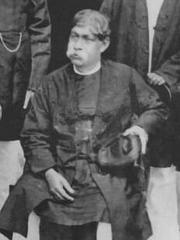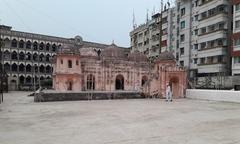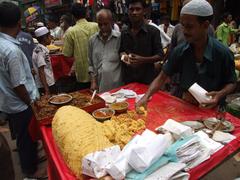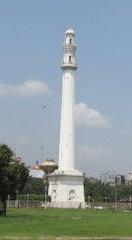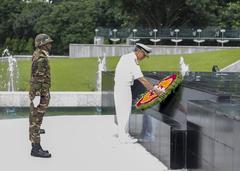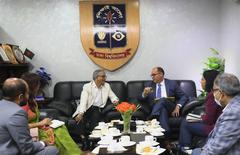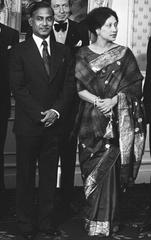Visiting Khan Mohammad Mridha Mosque in Dhaka: Everything You Need to Know
Date: 20/07/2024
Introduction
The Khan Mohammad Mridha Mosque, a remarkable exemplar of Mughal architecture, is situated in the historic Lalbagh area of Dhaka, Bangladesh. Constructed in the early 18th century, this mosque offers a unique window into the rich history and culture of the region. Its construction is attributed to Khan Mohammad Mridha, a high-ranking Mughal officer, and it stands as a testament to the architectural prowess of the Mughal era (Banglapedia). The mosque’s three-domed structure, intricate ornamentation, and elevated platform are quintessential features of Mughal architecture, embodying both historical and cultural significance (ASI). Over the centuries, the mosque has undergone several phases of restoration to preserve its structural integrity and aesthetic appeal, ensuring that it remains a focal point for cultural heritage tourism in Dhaka (DoA). This guide aims to provide visitors with all the essential information for a memorable visit, including historical insights, visiting hours, ticket prices, and travel tips.
History of Khan Mohammad Mridha Mosque
Origins and Construction
The Khan Mohammad Mridha Mosque is a significant example of Mughal architecture. Constructed in the early 18th century, the mosque is generally accepted to have been built between 1704 and 1706 (Banglapedia).
Architectural Significance
The mosque is characterized by its three-domed structure and intricate ornamentation. It stands on a raised platform, approximately 16 feet high, accessible by a flight of steps. This elevated platform provides the mosque with a commanding presence in the area. The mosque itself measures about 48 feet by 24 feet, with three arched entrances on the eastern side and one each on the northern and southern sides (ASI).
Patronage and Historical Context
Khan Mohammad Mridha was a prominent figure in the Mughal administration in Bengal. His patronage of the mosque reflects the broader trend of Mughal officials commissioning religious and civic structures as a means of demonstrating their piety and consolidating their social status. The mosque’s construction during the early 18th century coincides with a period of relative stability in the region, allowing for such architectural endeavors (UNESCO).
Restoration and Preservation
Over the centuries, the mosque has undergone several phases of restoration to preserve its structural integrity and aesthetic appeal. The most significant restoration efforts were undertaken by the Department of Archaeology, Bangladesh, in the late 20th century. These efforts focused on repairing the mosque’s domes, walls, and ornamental features (DoA).
Cultural and Religious Importance
The Khan Mohammad Mridha Mosque holds immense cultural and religious significance for the local Muslim community. It continues to function as a place of worship, hosting daily prayers and special religious events. The mosque’s historical and architectural value also makes it a focal point for cultural heritage tourism in Dhaka (Dhaka Tribune).
Comparative Analysis with Contemporary Structures
When compared to other Mughal-era mosques in Dhaka, such as the Lalbagh Fort Mosque and the Sat Gambuj Mosque, the Khan Mohammad Mridha Mosque stands out for its unique elevated platform and compact yet elegant design. These features highlight the diversity of architectural styles employed during the Mughal period and underscore the importance of regional variations in Mughal architecture (ASI).
Influence on Later Architecture
The architectural elements of the Khan Mohammad Mridha Mosque have influenced subsequent mosque designs in the region. The use of a raised platform, the three-domed structure, and the intricate ornamentation can be seen in later mosques built during the late Mughal and colonial periods (Banglapedia).
Archaeological Findings
Archaeological excavations around the mosque have revealed artifacts and structural remnants that provide insights into the construction techniques and materials used during the Mughal period. These findings include terracotta tiles, pottery shards, and fragments of decorative elements (DoA).
Challenges in Preservation
Despite the efforts to preserve the Khan Mohammad Mridha Mosque, it faces several challenges, including environmental degradation, urban encroachment, and inadequate funding for maintenance. Addressing these challenges requires a coordinated approach involving government agencies, heritage organizations, and the local community (UNESCO).
Role in Community Identity
The mosque plays a vital role in the cultural and religious identity of the local community. It serves not only as a place of worship but also as a symbol of the area’s rich historical heritage. Community-led initiatives, such as guided tours and educational programs, have been instrumental in raising awareness about the mosque’s historical significance (Dhaka Tribune).
Future Prospects
The future of the Khan Mohammad Mridha Mosque depends on sustained preservation efforts and increased public engagement. Initiatives such as digital documentation, virtual tours, and heritage tourism can play a crucial role in ensuring that this historical gem continues to be appreciated by both locals and visitors from around the world (DoA).
Visitor Information
Opening Hours
The mosque is open daily from 9:00 AM to 5:00 PM.
Ticket Prices
Entry is free for all visitors.
Travel Tips
The best time to visit is during the early morning or late afternoon to avoid the midday heat.
Nearby Attractions
Lalbagh Fort
A magnificent Mughal fort located nearby, perfect for a combined visit.
Ahsan Manzil
Also known as the Pink Palace, this historical site is a short drive away.
FAQ
What are the visiting hours for Khan Mohammad Mridha Mosque?
The mosque is open daily from 9:00 AM to 5:00 PM.
Is there an entry fee?
No, entry to the mosque is free for all visitors.
Are guided tours available?
Guided tours can be arranged through local tour operators or by contacting the Department of Archaeology, Bangladesh.
Conclusion
By understanding the rich history and significance of the Khan Mohammad Mridha Mosque, visitors can gain a deeper appreciation for the cultural and architectural heritage of Dhaka, making their visit a truly memorable experience. To stay updated on the latest information, consider downloading the Audiala app, checking out related posts, or following us on social media.



